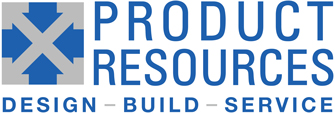QUICK ACCESS TO OUR SERVICE PAGES
Product Development
Product Design
Prototype Development
Pre-Manufacturing
Design for Manufacturing (DFM)
Manufacturing Documentation
Pilot Production
Regulatory Compliance
Manufacturing
Supply Chain Management
Product Assembly
Product Testing & Calibration
Post-Manufacturing
Product Delivery
Product Support
Sustaining Engineering
Planning a Project?
Let's see if there is a fit
What is Release to Manufacturing or RTM?
Release to Manufacturing is a key benchmark in the New Product Introduction process where the finished and approved product design is ready to be sent to manufacturing.
This leads to the question: “When is the design complete?”. Different people have different answers to this question.
The manufacturing group has one answer: When all the components and assemblies are fully defined, the manufacturing process procedures are complete, assembly and test tools and fixtures are purchased and built, and all of it is documented.
Until the above statement is realized, engineers will be required to be involved with the manufacturing of the product. That can happen in the short term but is not sustainable. The transition is not abrupt, but happens over a period as manufacturing processes are finalized and possibly validated and a Pilot production run is completed to show the manufactured product is a faithful representation of the design intent.
The more complete the documentation, the more details are defined and not subject to variances in supply, and the lower the risk of failures and scrap in production.
Here’s what should be done BEFORE your Release to Manufacturing:
Approved prototype(s)
Approved design
Approved design for manufacturing changes
Approved regulatory compliance
Approved manufacturing documentation
Bill of Materials
Component Detail Drawings
Assembly Drawings, etc.
Approved pilot production
As you can see, there is a lot more to it than simply having your prototype approved and the CAD files saved – not that you would ever do that.
Is there any wiggle room?
With every project, there is a need to move forward as quickly as possible.
And the question we often here is “can we get by with what we have in place?”
The answer of course is it depends on the risk that the product presents. If the product depends on precision machining, then those details must be fully described in the documentation. The supply chain also needs scrutiny to be sure you get the exact component you require – any variation because of a change can cause disruption. You may be able to get lucky for a while, but it will eventually cause disruption.
If the problem comes to light while the product is still in manufacturing, it may only be a disruption, but if it is not discovered until the product gets into the field – the cost escalates.
Get your FREE copy of our Release to Manufacturing (RTM) Standards
When products are still in the design phase, we are often asked what type of general information and documentation will the manufacturing partner be expecting.
We prepared this document to answer some of those questions.
Let’s take a closer look at the RTM Standards
Watch our videos as CEO John Erickson and COO Mike Dragonas discuss the process and the purpose for meeting the various RTM standards.
We’ll start with a quick overview …
Bill of Materials (BOM) & Parts
There are different types of Bills of Materials, and they will all work if they have the information for every part you need to build your product.
It’s a painstaking process that requires attention to detail to be sure that each part is defined by reference to a datasheet or drawing. It may show some structure in the design, identifying sub-assemblies. These sub-assemblies may have been determined with careful consideration to the manufacturing process, test requirements, field service / spare parts, etc., or may just fall out of the way the designer organized the CAD documentation, or both. If the structure of the product is not shown in the BOM (e.g., Indented BOM, or multiple single-level BOMs), then the assembly drawings would be used for structure.
Production Fixtures, Tools & Packaging
The RTM Standards go beyond the actual building of your product. It also needs to address any production fixtures or tooling that may be needed to build your product.
It also needs to detail the packaging that will be used for the product. Will it have a branded box? Will the package be able to protect the product during delivery? Was there testing to demonstrate the packaging design? What else will go into the box (e.g., power cords, instruction manuals, warranty cards)?
These questions all need to be answered before the manufacturing process can be considered complete.
Receiving, Inspection & Documentation
As parts come in, there must be a process for receiving and inspecting the parts to determine if they are the correct parts, correctly manufactured. This process may vary depending on the complexity of the part, delivery history of the supplier, whether it is a custom part or an off-the-shelf part.
In the simplest case, the manufacturer and part number of the part must match the purchase specification. In more complex cases, there may be inspection procedures detailing the requirements. There may also be requirements for a Certificate of Conformance to indicate that the supplier has confirmed the part(s) meet the purchase specifications and drawings.
Calibration & Testing Procedures
Throughout the assembly process, your product will be tested and calibrated to be sure you are meeting established guidelines and measurements.
RTM Standards identify where there is a need for Test and Calibration procedures.
Regulations
If your product must meet any regulatory requirements, this should be stated within the documentation for the product so that the manufacturer understands their responsibility to meet those requirements. Where an NRTL (e.g., UL, TUV, ETL) has allowed their Mark to be placed on the product, they have identified specific components and design features that must be installed per their instructions. These requirements may be in addition to your requirements (e.g., an electrical safety test).
These requirements depend on what your product is, how it is used, and where it may be sold. Those “marketing” requirements drive the testing required by regulatory agencies.
Recordkeeping
For every product, there is some level of recordkeeping that kept, even if it is simply how many were shipped, and when.
But for most products that we build, there is significantly more documentation of the manufacturing process that is required. We handle it though a Device History Record (DHR) which collects information about the parts received, manufacturing processes and in-process testing, calibration, final testing, and outgoing inspection. We handle this through our ERP and QMS systems, and the processes for record-keeping are designed on a product-by-product basis.


